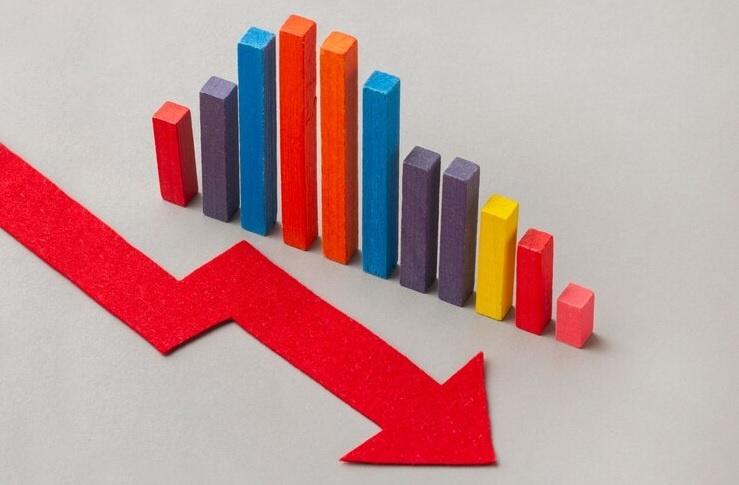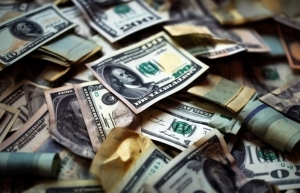US Fed's favored inflation gauge falls, but price pressures remain
 |
| US Fed's favored inflation gauge falls, but price pressures remain, illustration photo/ Source: freepik.com |
The new data highlights the challenges facing the Federal Reserve, which has recently poured cold water on the prospects of early rate cuts amid a strong economy, low unemployment and inflation that remains above its long-term target of two percent.
The personal consumption expenditures (PCE) price index rose at an annual rate of 2.4 percent in January, down 0.2 percentage points from December, the Department of Commerce said in a statement.
"The signal from the data remains that the economy continues to expand, and inflation is receding gradually," High Frequency Economics (HFE) chief US economist Rubeela Farooqi wrote in a note to clients.
Fed officials have been debating the right time to start lowering rates, which currently stand at a 23-year high of between 5.25 and 5.50 percent.
A number of officials have come out in recent weeks to suggest the Fed can afford to be patient before it begins cutting rates.
Speaking in the US state of Georgia on Thursday, Atlanta Fed president Raphael Bostic said it would "probably be appropriate" for the US central bank to start lowering its key lending rate "in the summer time."
On a monthly level, headline PCE inflation rose by 0.3 percent in January, slightly below market expectations, according to Briefing.com.
The closely watched "core inflation" measure, which strips out volatile food and energy costs, also eased, rising by 2.8 percent on an annual basis.
However, core PCE increased by 0.4 percent from a month earlier, indicating an uptick in underlying inflation from December to January.
The rise is likely to keep up the pressure on the Fed to ensure that any fall in inflation is more widespread before it starts reducing interest rates.
"Fed officials will remain patient and wait for more data that confirms that inflation is moving sustainably towards target," Farooqi from HFE said.
There was also a sharp increase in personal income, which jumped by 1.0 percent in January after increasing by just 0.3 percent in December.
The move "primarily reflected increases in government social benefits, personal income receipts on assets, and compensation," the Commerce Department said.
The personal savings rate, which measures how much people save as a percentage of their disposable income, ticked higher to 3.8 percent in January from 3.7 percent a month earlier.
The slight increase stands in stark contrast to a sharp drop between November and December, and suggests that consumers are beginning to rebuild their financial buffers.
 | US Fed rate cuts become question of when, not if The US Federal Reserve is widely expected to start cutting interest rates in the coming months, as inflation edges closer to its long-run target of two percent. |
 | US dollar dominance not under threat, despite risks: Fed official The status of the US dollar as the world's reserve currency is likely to continue, despite threats posed by China's rise and the growth of cryptocurrencies, a US Federal Reserve official said Thursday. |
What the stars mean:
★ Poor ★ ★ Promising ★★★ Good ★★★★ Very good ★★★★★ Exceptional
Related Contents
Latest News
More News
- Cake by VPBank posts strong gains in scale and efficiency leveraging AI focus (January 05, 2026 | 18:55)
- Banks step up listing plans in 2026 to strengthen capital and transparency (December 31, 2025 | 18:59)
- Ho Chi Minh City projects $10.5 billion remittance inflows in 2025 (December 31, 2025 | 18:58)
- New decree sharpens enforcement in securities market (December 31, 2025 | 18:53)
- Gold market reform advances as SBV receives applications for bullion production (December 30, 2025 | 12:07)
- EVN and AFD sign credit agreement for Vietnam’s first pumped storage hydropower plant (December 30, 2025 | 10:06)
- Techcombank Priority Visa Signature unlocks a higher standard of living (December 29, 2025 | 16:44)
- Tax sector wraps up 2025 and sets priorities for next year (December 25, 2025 | 14:00)
- A tipping point for digital and hybrid wealth management in Vietnam (December 23, 2025 | 13:33)
- $250 million deal targets women-owned SMEs, sustainable agriculture (December 22, 2025 | 17:40)

 Tag:
Tag:





















 Mobile Version
Mobile Version